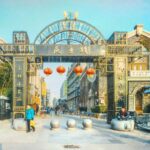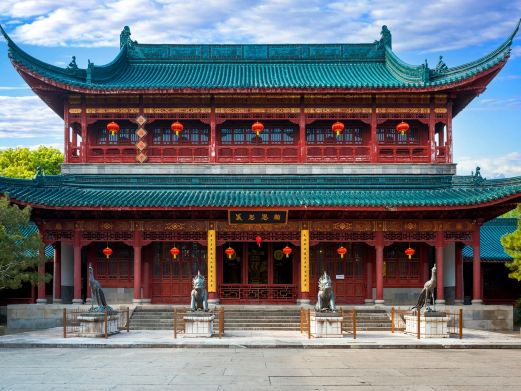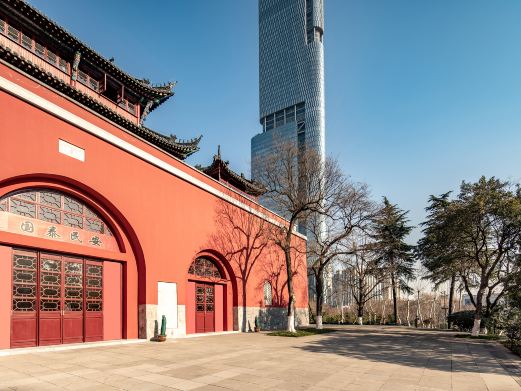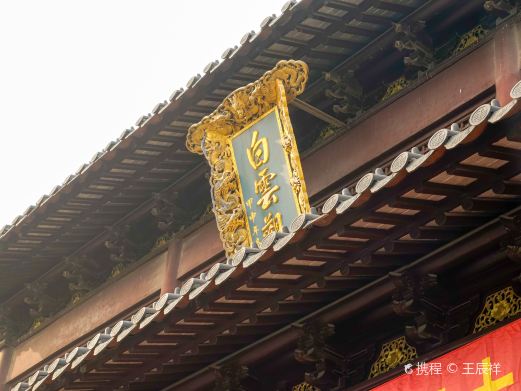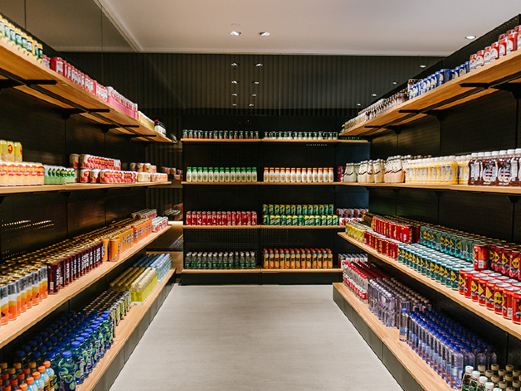The Tangyue Memorial Archway Group is located approximately 6 kilometers west of Shexian, consisting of seven archways that stretch across the stone paths of the countryside, exuding an extraordinary presence. Every April, the rapeseed flowers blooming on both sides of the road enhance the charm of the archways. Not far from the archways lies the Baojia Garden, where numerous bonsais can be seen. The seven archways of the Tangyue group are centered around the ‘Yi’ (Righteousness) arch, arranged in the order of loyalty, filial piety, chastity, and righteousness from both ends towards the center.
The Bao Chan Filial Piety Arch, Cixiaoli Arch, and Bao Xianxian Minister Arch are from the Ming Dynasty, while the Bao Weiling’s Wife Jiang’s Chastity and Filial Piety Arch, Le Shan Hao Shi Arch, Bao Wenyuan’s Stepwife Wu’s Chastity and Filial Piety Arch, and Bao Fengchang Filial Son Arch are from the Qing Dynasty. These archways were built in ancient times to honor individuals with outstanding contributions and virtues, making each one a hard-earned symbol with a touching story behind it. Do not miss these three archways: Bao Xianxian Minister Arch, Cixiaoli Arch, and Bao Wenyuan’s Stepwife Wu’s Chastity and Filial Piety Arch. The Bao Xianxian Minister Arch was originally built during the Tianqi era of the Ming Dynasty, as Bao Xianxian was meritorious in defending the border and was bestowed with imperial favor for three generations, including the Filial Piety Arch of his grandfather Bao Chan. The Ming Dynasty’s Cixiaoli Arch was built for a father’s kindness and a son’s filial piety; at that time, a father and son from the Bao family were captured by rebels, and when one had to be executed, both competed to die so the other could live, a deeply moving story. The Bao Wenyuan’s Stepwife Wu’s Chastity and Filial Piety Arch was built during the Qianlong era of the Qing Dynasty for a Shanghai woman who began to live as a widow at the age of 29. Next to the archway group, there are two ancestral halls. In Tangyue Village, the Bao surname is a major one, and the halls enshrine the Bao family. Dun Ben Hall, also known as the Bao Family’s Branch Ancestral Hall, commonly referred to as the Men’s Ancestral Hall, is grand in scale, with inscriptions such as the ‘Yitian Regulations Stele’ and the ‘Jiaqing Emperor’s Edict Stele’. Qing Yitang, also known as the Bao Family’s Women’s Ancestral Hall, is very special, built exclusively for the chaste and heroic women of the Bao family throughout the generations. The history of Huizhou women who had to stay alone at home until old age while their men were away on business for long periods can be faintly seen through the ancestral halls. Baojia Garden is only 500 meters away from the Tangyue Archway Group, and it is a must-visit after seeing the archways. In the private gardens of the Qing Dynasty, there are many exquisitely trimmed bonsais, including the ‘Nanguo Fengqing’ ancient banyan tree, which has been cultivated for over two hundred years and is the ‘treasure of the garden’. The garden is open all year round from 07:30 to 17:30, with specific business hours subject to the day’s opening status.Tangyue Memorial Archway Group
The Tangyue Memorial Archway Group is located approximately 6 kilometers west of Shexian, consisting[...]


